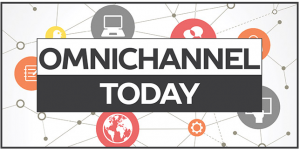Increase customer satisfaction and conversion with conversational marketing
Live chat and messaging apps have become an integral part of any omni-channel customer service strategy.
Customers value the ability to get answers when and where they want and companies are improving customer satisfaction and conversion rate thanks to the capability of providing real-time responses.
One study found that 38% of customers said they have made a purchase due to a good live chat session. Live chat assistance has also been noted for helping to decrease cart abandonment by up to 30%, which in turn lead to an increase in sales.

The key to getting the most out of live chat or messaging apps is to deliver a personalized experience tailored to each customer with conversational selling.
One-to-one conversations: the most effective way to convert
Remember the good ol’ days, before lead generation forms and email marketing, when people made sales solely by talking to other people!
With the help of advanced marketing technologies, it’s now possible to have one-on-one conversations with a large number of prospects and customers simultaneously and deliver a highly personalized experience in a way that’s most convenient.
This is often called “conversational marketing” – a process of having real-time, one-on-one conversations to capture, qualify, and connect with your best leads anytime and anywhere.
How to optimize conversational marketing
At the heart of conversational selling is a customer-driven approach that focuses on one-on-one interactions.
With the aid of technology, marketers can scale up these personalized interactions such that one employee can manage multiple, concurrent one-to-one conversations.
Here are some characteristics of conversational marketing to leverage:
Real-time interactions and fast responses
Conversational marketing is effective because customers can get the assistance they need right away.
With the combination of chatbot and live agents, you can effectively provide customers with the most relevant information as quickly as possible.
Chatbots can be programmed to respond to specific questions while triaging more complex requests so that a live agent can step in to assist promptly.
Customer-centric engagements
You don’t convert customers only by collecting leads. You make sales when you engage prospects in a dialog to understand what they need and offer a solution.
Conversational selling is effective because it focuses on having a two-way conversation so that you can deliver the most relevant information or solution based on the context of the interactions.
Personalized conversations
These one-to-one conversations are contextual and informed by a customer’s past interactions with your brand.
Even if you’re talking to a lead for the first time, you can add a personal touch by getting insights from their browsing history, the page on which they’re initiating the contact, or their locations based on IP addresses.
Customer insights
You can glean customer insights and collect additional information to enrich existing customer profiles through conversational marketing.
For example, when you ask a customer if he wants to be notified when there’s news about a certain product category, you get information on the kind of items they’re interested in to inform your segmentation and marketing efforts.
The information gathered through these conversations can help you get a more in-depth understanding of your customers so that you can fine-tune your sales and marketing strategies.
The key to seamless customer experience
Conversational marketing helps deliver seamless customer experience and facilitates prospects’ progression down the purchasing path.
A 360-degree customer profile is the key to success for this marketing strategy.
This single customer view allows your team to deliver an outstanding purchasing experience based on all the interactions a customer has had with your brand so you can maximize the use of technologies such as chat and messaging apps to optimize your ROI.







